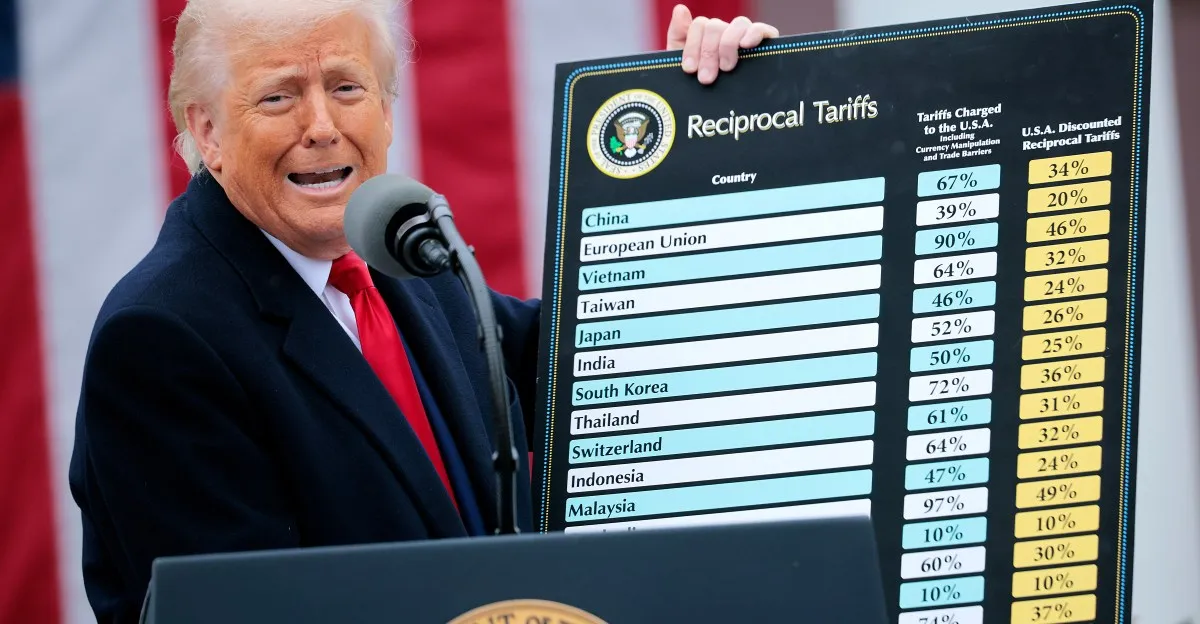
Nintendo made headlines yesterday by officially unveiling its highly anticipated Switch 2, just hours before former President Trump announced his latest round of tariffs from the White House Rose Garden. This new round of tariffs, the largest yet, poses a significant challenge for Nintendo, particularly as the new rates could reach as high as 49 percent in the countries where the company manufactures its consoles. The potential for these costs to be passed on to U.S. consumers raises questions about the future pricing of the Switch 2.
Nintendo finds itself in this precarious position largely due to the company's previous adaptations to Trump's trade policies. Historically, Nintendo's manufacturing was heavily concentrated in China. However, during Trump's first term, the combination of tariffs on Chinese imports, disruptions caused by the COVID-19 pandemic, and geopolitical tensions such as Russia’s invasion of Ukraine led to significant upheaval in supply chains. As a result, Nintendo made the strategic decision to diversify its manufacturing locations. According to a report from the Financial Times, more than half of Nintendo’s hardware destined for the U.S. is now produced in Vietnam and Cambodia.
Unfortunately, the diversification to these manufacturing hubs has not shielded Nintendo from the effects of the new tariffs. The countries most affected by Trump's latest tariff measures include Vietnam, which faces an additional 46 percent tariff, and Cambodia, with a staggering 49 percent tariff increase. China, too, has been impacted by an extra 34 percent tariff on its exports to the U.S.
Research from the National Bureau of Economic Research highlights a concerning trend: during Trump's first term, U.S. consumers bore the brunt of these tariffs, experiencing higher prices on imported goods as manufacturers passed on nearly all of the cost increases. The upcoming launch of the Switch 2 on June 5th is expected to retail at $449.99. If we estimate the new tariffs to average around 40 percent, this could result in an additional $180, bringing the total potential price to approximately $630. Similarly, the cost of games like Mario Kart World, initially set at $79.99, could rise to over $110, depending on the tariff situation.
Despite these daunting projections, there are a few factors that might help mitigate the impact of the tariffs on consumers. Firstly, it is possible that Nintendo has already factored some of these potential costs into its pricing strategy. While the company may not have known the exact tariff rates, it likely anticipated some form of increase and set the Switch 2 price at $449.99, which is significantly higher than the original Switch’s price of $299.99.
Another mitigating factor is that Nintendo appears to have proactively prepared for the impending tariffs by stockpiling hardware in the U.S. The Financial Times reports that the company imported “hundreds of thousands” of consoles to the U.S. ahead of the tariff changes, with a notable shipment of 383,000 units arriving within just five days in January. However, considering that the first Switch sold 4.8 million units in the U.S. during its first nine months, it's uncertain whether these early imports will suffice to meet demand without necessitating a price increase.
Lastly, it is essential to recognize that the situation surrounding the tariffs remains fluid. The new tariffs are scheduled to take effect soon, with a global 10 percent tariff beginning on April 5th, followed by the elevated rates on April 9th. However, the unpredictability of Trump's administration leaves room for speculation; these tariffs could potentially be a negotiation tactic or an empty threat, leading to delays or alterations before Nintendo incurs any additional costs.
As we approach the launch of the Switch 2, both consumers and industry watchers will be keenly observing how these tariff developments unfold and what impact they will ultimately have on the pricing of beloved gaming consoles and their games.